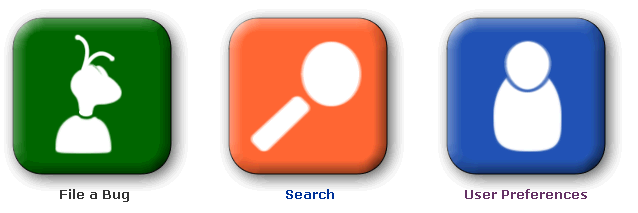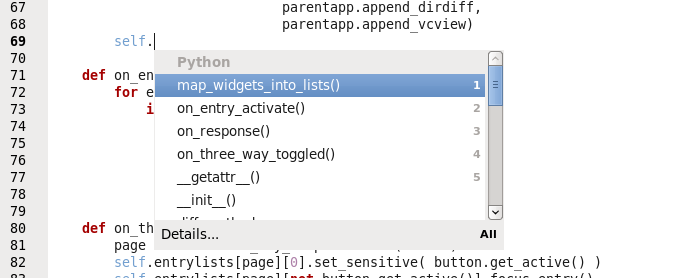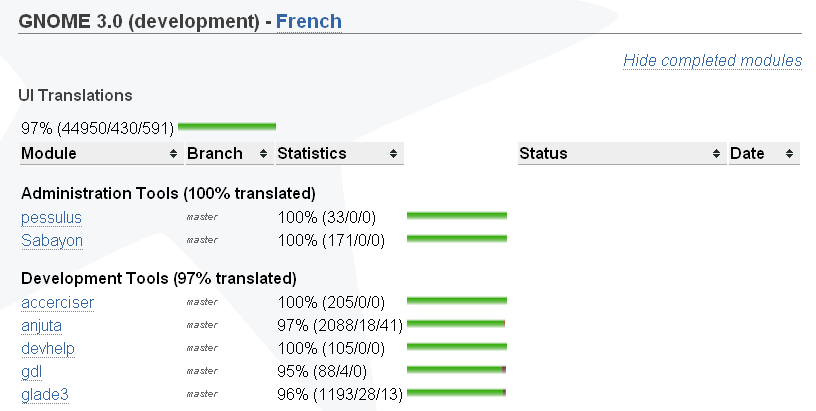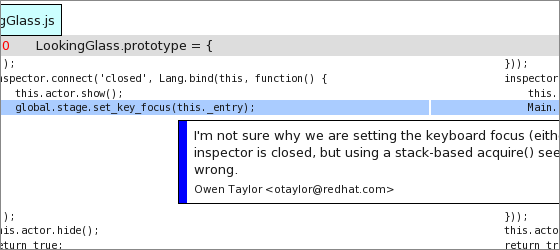“We have no plans to fork GNOME”
10. August 2010
Andreas Proschofsky made an interview with Jono Bacon that is really worth reading.
Some comments on this from my side:
Actually that’s all upstream work, it’s just that Ayatana is the upstream
Well, it is not. If you customize an upstream project (GNOME) you cannot call your result upstream anymore, it is downstream. And Jono doesn’t mention that Canonical requires copyright-assignment for all of the parts of Ayatana.
Update: My original wording was: “Technically upstream means not done by a distribution (downstream)” which seems to have led to some confusion so I try to clarify that.
Historically a lot of the work has been done in upstream GNOME but that’s changing
Prove? I don’t think it’s changing even if Canonical probably wants to change that.
So sure it’s a delicate situation but it’s the same with Red Hat building GNOME Shell which is a completely different user experience to GNOME.
As I think that Jono knows better I wonder why he is oversimplifying things here. While GNOME Shell is pushed by Red Hat everybody was invited to contribute and there is also a community of people not working for Red Hat that is heavily contributing to the Shell. GNOME Shell is not a Red Hat project.
Part of it is the fact that the design team that we’ve got working on Ubuntu has a different set of ideas. So besides the mobile space – where we are building a new User Experience with Unity – the focus for Ubuntu is GNOME with these additions.
I think everybody in GNOME would love to work together with the Canonical design team (and luckily it is happening sometimes). If they would present different ideas how they see the future of GNOME (Shell) there would be really nice discussion IMHO.
Conclusion
I really don’t mean to say that Canonical is evil because that would be unfair. They support GNOME in various ways with sponsership, patches, bug-reports and ideas.
As they are a company aiming on making money I can kind of understand their strategy on trying to be better, more innovative and different from other Linux distributions. This is their legal goal with Project Ayatana and it is one of the reasons they do not care too much about pushing things upstream.
But I think they make a mistake if they think that they can replace thousands of volunteers working on upstream projects with developers they have to pay in-house. In short term this may lead to more innovation but in the long term they will suffer in quality and quantity. You might remember the story with Novell’s main menu which was also innovative but didn’t ever end up being widely used.
Anyway, it is far more important to look into the future than into the past. This will also mean that people should push upstream work and GNOME Shell on the Ubuntu Developer Summit and I am sure there are many people there who care a lot about GNOME and Ubuntu.
Save the icons
7. August 2010
Stop Vincent from removing these important icons from gnome-desktop module:
Be honest, can a desktop live without these?
Anjuta gains support for Python
5. August 2010
So, finally the Python plugin originally developed by Ishan Chattopadhyaya in GSoc 2009 has made it’s way into the master branch after some heavy modifications.?? As usual the auto-completion and calltips are fully asynchronous and won’t be in your way while typing. You need to have the rope libraries installed for it to work (and that’s not checked for now…) and they are used as backend. As I am not a Python programmer I cannot really say if the support is complete but it shows a reasonable amount of information. As python is not a strong-types language this are actually a bit tricky and all the dirty work is done inside rope.
Enough words, some screenshots:
Patches welcome…
All Python programmers are encouraged to test this, give feedback (Bugzilla) and ideally write patches to improve this.
(cross-posted on Anjuta News Blog)
GUADEC follow-up
2. August 2010
GUADEC
As others have mentioned, GUADEC was great. Thanks a lot to the organizers. Especially it rather felt like being part of a big family instead of just being a guest there. And I think that was the first GUADEC where people started dancing. So congratulation to Stephane, Lenka and Patricia for winning the dancing awards!
It is also always great that people not yet involved with GNOME come to GUADEC because they want to become a part of the project.
GNOME 3.0
With the discussion about delaying GNOME 3 and after watching the gnome-shell talks I wondered a bit if we go into the right direction. Actually, I think we do though nobody can say today if all this will be successful. My point is that we basically copied the desktop idea from others in the past years with little changes and little innovation. Now we really try to innovate which brings the risk of failure but also the big chance to really increase our market share. Remember that we had this 10×10 goals?
So, as conclusion, we might fail but at least we tried.
Development Documentation and Tools Hackfest
The wiki page has been updated to finally contain a date, which is 2nd to 5th of December 2010. This might still change if it causes problems for too many people, so please contact me if you cannot make it on that weekend. Also we still need sponsorship and I didn’t get an answer from the board, yet. Stay tuned!
Anjuta
While still trying to release a new development version of anjuta I mostly worked on getting the python support from GSoC merged. There is still a lot to polish but the basic stuff is now set up in the python-support branch and will hopefully hit master soon. This will eventually lead to auto-indentation, auto-completion and calltips for Python.
LinuxTag, Guadec and others
1. July 2010
If you look to the left you will see that after nearly four years on Planet GNOME I now have a hackergotchi (thanks Kat) and I am joining the famous hat fraction.
GUADEC
This is even more important because now you can finally find the person that broke half of your development environment at GUADEC because, yeah,

and I am

This is also a good place to remind you of the world-famous FreeFA cup where you can save the honour of your country. In the last years this has been lots of fun so be sure that you aren’t missing it.
Five Questions
1)Who are you and what do you do?
Sometimes, I really would want to know that 😉 On other days, I am a 25 year old student/trainee who currently builds trains for work and hacks on the GNOME Development Tools in his spare time.
2) How did you get into GNOME?
I wrote a patch…
3) Why are you coming to GUADEC?
It always much better to meet all the people you only now from blogs, IRC and mail in person. Most people in the GNOME community are actually pretty awesome and fun to hang out with. And don’t forget about the beer event of course…
4) In 1 sentence, describe what your most favorite recent GNOME project has been. (Doesn’t have to be yours!)
GNOME Shell (yeah, I know some people said this already), because it is the first time since about Windows 95 where someone really tried to reinvent the desktop user experience.
5) Will this be your first time visiting the Netherlands?
No, I have been to Amsterdam and I sailed on IJsselmeer twice. Nice country, a bit flat though.
LinuxTag
As Vincent already mentioned we had a nice talk at LinuxTag and there is also a (german) radio interview with me about GNOME3.
Was fun to talk to some people, especially to one of the KDevelop developers who faces about the same problems as we do: There are 10 people working full time on QtCreater while Anjuta and KDevelop probably have 5 spare time contributers each 😐 Awesome though, that we are still competitive 🙂
In front and behind the scenes of Anjuta development
7. June 2010
(cross-posted from the Anjuta News Blog)
Today Anjuta 2.31.3 was released today and it brings some nice features and bug fixes (see NEWS)
What’s new?
- Massimo Cora’ put a lot of energy into the speed of the symbol database population and brough it down to about 15 seconds for 1000 files.
- Abderrahim Kitouni finished up his GSoc ’08 work and the language support for vala got merged into trunk. This means we now have autocompletion and calltips for Vala.
- Naba Kumar ported the class-inheritance plugin from GnomeCanvas to FooCanvas, made it much faster and integrated it back into master
What’s happening behind the scenes?
- Sébastien Granjoux worked hard on the new project-manager branch but unfortunately it won’t be finished in this cycle. But once it is finished it should bring a much better project management to anjuta.
- Naba Kumar is working on improving the database queries for the symbol-db which should in the end result in faster and better autocompletion and in general better code.
- James Liggett started working on a completely new and innovative interface to the git version control system. It will integrate version control much better into the workflow.
- Abderrahim Kitouni also worked on a plugin loader for python and javascript plugins. In the end we should hopefully support even more plugin languages with gobject-introspection. He blogged about it.
- In general we follow the development of libpeas with much interest. This might replace our own plugin infrastructure in the future.
- The glade plugin was cleaned up. It doesn’t provide any new features (actually, some were even removed) but it should be more stable now. This work is targeted to allow to drag signal handlers from glade right into the code. Currently this mostly meant cleaning glade internals but there is still hope finish it for 3.0.
How you can help!
- Test the latest release and file bugs! Though declared as “unstable” it should be equally stable as 2.30.x.
- Help us fixing bugs! There is lots of stuff to do including a new icon (we would like to keep the horse which was a unicorn before the horn was ripped off, otherwise you are pretty free) and a new splashscreen.
- Help to improve language support! We have language support plugins for C/C++, JavaScript and Vala now but most of the Anjuta developers are C coders. We need people to test this and if possible also fix it. Vala support is written in Vala itself which should make it easier for you.
- Documentation, especially tutorials are another point were you can help us and any potential GNOME contributor in getting started with Anjuta.
Why gnome.org Rocks: Translations
4. June 2010
This article is part of a series of articles about why I feel gnome.org is a great home for your Open Source project.
Translations are an important point for the success of a project. Most of the people in the world don’t have English as their first language and might not even understand it at all. Luckily a big community is taking care of that issue and translates open source software into many languages including some that would probably just die if there is not enough content for them.
gnome.org provides an extraordinary platform for translatiions called (historically) Damned lies about GNOME. It provides a variety of services and helps to keep translation teams together and productive:
- Download up-to-date POT files without having to deal with git
- Upload translations for review
- Review translation
- Managing your team by assigning modules
- Translation stats
- Automatically commit translations (coming soon hopefully…)
In addition it provides additional information for problems in the project translation infrastructure and links to translation bugs and the possibility to file new translation bugs if necessary.
Getting your app translated
There isn’t much you need to do for the Translation Project to pick up your project when it is hosted on gnome.org. Sending a reminder mail to i18n-list cannot hurt though to have your project added to damned-lies. The rest will then just happen on it’s own but be aware that translators can be picky about wording! Keep your string clear and understadable, otherwise they will bother you 😉
Why gnome.org Rocks: Great bug tracking
4. June 2010
This article is part of a series of articles about why I feel gnome.org is a great home for your Open Source project.
Bug trackers are usually an annoying things. There are always more bugs than you can cope with at a specific time and it can become horrible to keep track of the important things. It is pretty difficult to keep bugs organized and often a lot of crap accumulates in your tracker.
In addition there is no real line between bugs, features, ideas, enhancements usually so keeping them in different places just causes distraction.
Simplicity
 From the start bugzilla.gnome.org provides you a with simple interface to just do your stuff, regardless if you are user or developers. It guides you through the steps necessary to file new bugs as well as hinting you how and where to find duplicates.
From the start bugzilla.gnome.org provides you a with simple interface to just do your stuff, regardless if you are user or developers. It guides you through the steps necessary to file new bugs as well as hinting you how and where to find duplicates.
It also provides a sane way for the bug squad and for developers to mark duplicates, move bugs between different modules, set dependencies of bugs and link bugs with external resources in other bug trackers.
Speaking of the bug squad: This is a ridiculous productive team of people helping you sorting out all the crap, duplicates and unclear bugs from your module. If you want to contribute to GNOME and don’t really now where to start, they always need help.
And not to forget about the highly configurable mail interface that gives you notifications of what happens to your bugs and your project.
Overview
This is one of the strongest points of the GNOME Bugzilla: It gives you a place to start from. You now that number of bugs, the bugs needing a comment, the unreviewed patches and most important the priority of the bugs around. I haven’t seen a single bug tracker providing this information in such a nice way.
Patch review
Kudos go to Owen Taylor here! Splinter is probably the best patch review tool around with an absolutely intuitive user interface. I allows you to quickly comment on patches and to help new contributors. This is especially important as the problems are usually the little things and that it is pretty annoying to explain everything when you could just add a simple annotation here and there.
This article is part of a series of articles about why I feel gnome.org is a great home for your Open Source project.
After some discussion and a final poll gnome.org decided to got for git as version control system. git is a very powerful system and might have a higher learning curve than other DVCS but it also gives you nearly unlimited power on your code. One of the coolest features include:
- Easy local and remove branches
- Cherry-picking changes from other branches
- Edit the history
- Creating series of patches
cgit: Web inteface
Often it is extremely convenient to track the project status of something you are interested by firing up a web-browser. git.gnome.org/browse implements a very nice interface to the version history and new changes. It shows you the information you are interested hiding all the dirty details.
Add your project
As GNOME is a community project and not a hosting service, getting your project into GNOME git might look frightening first though it isn’t. Often you will start coding without the big picture of where the project will end up. Things like github are possibly a nice place to get started with prototyping when you just need code hosting.
But when you are at the point where things are working and stuffs turning out to be great, just follow the instructions and you will be amazed what will happen:
- People will file bugs if your module doesn’t build
- Translators will bother you to fix your strings and translation infrastructure
- All those little things you might have missed on first try like other platforms, other distributions and build system issues will come up on bugzilla and give you the opportunity to build an even more awesome project.
Bugzilla integration
Again it was Owen who created cool scripts to interact with bugzilla and thus don’t having to get off your work to file bugs and patches. Read his blogs post for details.
Why gnome.org
4. June 2010
Today I want to start contributing to a solution for something that has been agitating me for a while. That is, simply not enough people know who wicked-cool hosting your project on gnome.org is.
As many other people probably, I started hosting projects on sourceforge.net years ago. Over time, their infrastructure became limited. In between I used garage.maemo.org for some stuff which is nice but also limited in some way for bigger projects.
In the end, all the stuff I work on and that I maintain is hosted on gnome.org. While I never worked on any part of that infrastructure and I have high respect for all the sysadmins donating their time to such a great platform I still think we need to do better promotion for it.
Just enough goodness for my project
The gnome infrastructure is the perfect place for my projects because it gives you all the benefits of project hosting without limiting you to a specific development model. And in addition it is a great place to collaborate with other great GNOME projects.
In particular it features great solutions for the following things:
- Bug Tracking: The best bugzilla I have seen around with an awesome bugsquad taking care of all the incomplete and strange bugreports
- Code Hosting: Store your code in the git version control system and keep track of the status with the cgit web interface
- Translations: Huge number of translation teams that provide high-quality translations and damned-lies as great tool to track translation status, submit and review translations
- Mailing lists: Provides a high quality mailman interface for your mailing list including with archive and bonus features like registering your mail as post-only for all gnome lists which gives great convenience.
- Web space: Give your project a home on the web which unlimited space and fast servers.
- Wiki: Nice, easy to use and translatable space for keeping some non-code stuff for your project
All of the major and successful GNOME projects use that infrastructure regardless if driven by companies, groups or individuals.
See the list of Why gnome.org Rocks articles here.
(You might have noticed that this series looks a lot like Jono’s series on Launchpad. That’s intentional! But that doesn’t mean that I want to start a flamewar on project hosting. I just have the feeling that people don’t really understand how good our infrastructure is and I really want to change that.)





